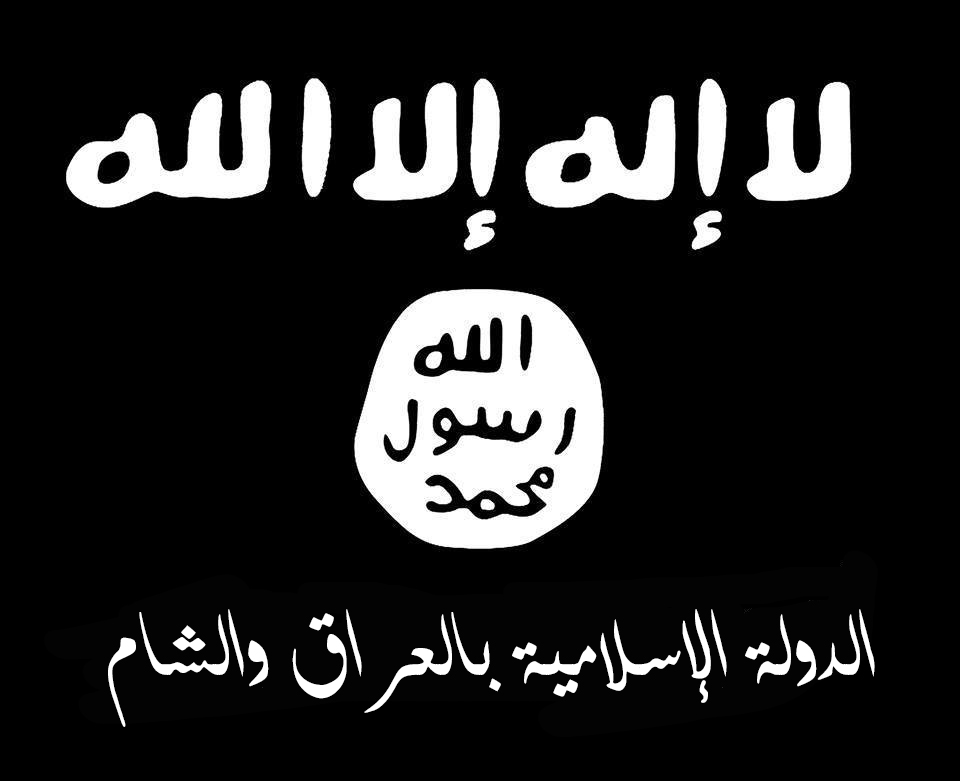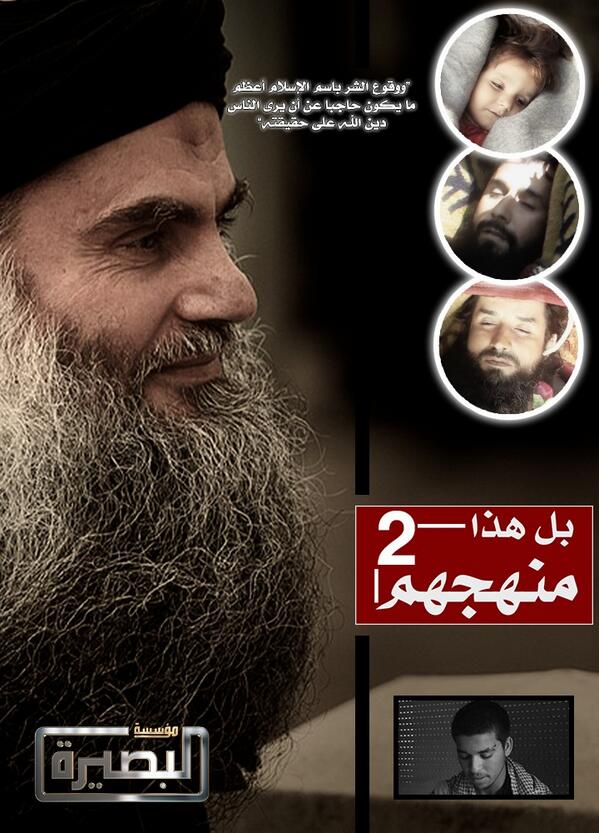NOTE: For prior parts in the Clear Banner series you can view an archive of it all here.
—
“For Our Freedom and Yours?”: The Lack of Central European* Foreign Fighters in Syria
*Central Europe is understood here as a bloc of formerly communist states, which are NATO and EU members (Poland, Czech Republic, Slovakia, Hungary, Slovenia, Croatia, Romania, Bulgaria) plus the three former Soviet republics of Estonia, Latvia and Lithuania.
By Kacper Rekawek, PhD
“For Our Freedom and Yours” is one of the Polish national mottos first unveiled during the anti-Russian rebellion of the early 1830s. Its standing was augmented by the subsequent participation of the current author’s countrymen in different conflicts around the globe – from the Hungarian Revolution of 1848 to all battlefronts of the Second World War. Nonetheless, Poles fought as foreign fighters in earlier conflicts as well – be it the wars waged by the revolutionary France in Italy in the late 1790s (the song by the so-called Polish “legionaries” fighting alongside the French against the Habsburg Austria is Poland’s national anthem) or during the American War of Independence. The latter conflict produced one of Poland’s and possibly the world’s, most famous foreign fighter – Tadeusz Kosciuszko, a national hero to both Poles and Americans, whose monument stands yards away from the White House in Washington D.C.
Such strong and emphatic tradition of participation in foreign conflicts could, theoretically, result with scores of Polish volunteers ready and willing to fight for the cause of freedom around the globe. At the end of the day, citizens of the state, which regained its political sovereignty only in 1989 would be expected to remain zealously enthusiastic about aiding others in their quest for freedom. The same could be said about the societies of Poland’s Eastern and Southern neighbours or former communist countries, which are now all members of the European Union and NATO. Just as they all often offer and market their experiences of transformation from dictatorial regimes to liberal and prosperous democracies as interesting examples to all of the world’s democrats, different individuals from Poland, Czech Republic, Hungary, Slovakia, Lithuania, Estonia, Slovenia, Latvia, Romania, Bulgaria, Croatia could be expected flock to the banners of non-violent or armed movements or organisations advocating independence or democracy. However, it has not happened and neither the stereotypically romantic Poles or more pragmatic Czechs, just to name two of Central Europe’s nations, made names for themselves either as foreign activists or foreign fighters. Moreover, they seem to be missing out on the fight some of their Western European, Eastern European, or Balkan (as detailed in the International Centre for the Study of Radicalisation estimates) peers are waging against the Assad government in Syria. Let us investigate why this is the case and study the counter-terrorism implications such situation poses for the countries of Central Europe.
There had been individual cases of foreign fighters from the region making their trek to wage jihad in Afghanistan in the 1980s (Poland reports 3 such cases). The individuals were not religiously, but rather politically motivated – in theory, the war in Afghanistan offered a meaningful opportunity for those wanting to take the fight directly to the “Russians.” It is worth remembering, however, that the opposition to communist regimes in Central Europe was entirely non-violent and such endeavors gained very little traction amongst the members of the likes of the Polish Solidarity or the Czechoslovak Charter 77. On top of that, Central and Eastern Europeans could get to battlefields in exotic places (like Afghanistan, but also in other countries in Asia or the Middle East) more easily as advisors to the local army, embedded with the Soviet troops, than as foreign fighters (e.g. the current author interviewed a Hungarian general who served as an advisor to the Syrian military in 1982). The logistical, financial, and bureaucratic obstacles while living under police states modelled on the Soviet Union would simply be insurmountable even for the most enthusiastic, but very small in number, prospective volunteers wishing to go to Afghanistan. For these reasons, the Poles who participated in this conflict used different Western European countries as launching pads for their forays into Afghanistan.
One could argue that the post-1989 reality of Central Europe should offer a marked change for potential foreign fighters emanating from this region. The aforementioned obstacles were disappearing and as the Central European countries were plugging themselves into the global economy, they and their citizens were becoming more and more aware of the world around them. Some activists and do-gooders embraced humanitarian and relief efforts in e.g. the Balkans, but very few felt the need to help fight for someone else’s freedom in the ranks of foreign rebel or insurgent groups. Not that there was no sympathy for e.g. the Chechens, who just like the Afghans a decade earlier, were fighting what in the minds of especially many Poles, Lithuanians, Latvians and Estonians initially constituted a struggle for independence of their homeland against the Russian invaders. This seemingly popular common Russian denominator, however, failed to ignite a phenomenon akin to the mobilization of Islamist foreign fighters in Western Europe for the civil war in Syria – only a handful of Poles, and hardly any Czech, Slovak, Hungarian or Bulgarian etc., trekked to Chechnya. The smaller, but perhaps more emphatically, at least initially, pro-Chechen, Baltic states are sometimes rumoured (as there is hardly any reliable data available) to have contributed more – some sources even mention allegedly Lithuanian female snipers fighting on the Chechen side. Moreover, after 9/11 and especially the Beslan school siege, much of the initial goodwill for Chechnya in Central Europe simply vanished. The alleged journalistic scoop of two prospective Polish fighters training in the Polish mountains for the hardship of the North Caucasus from 2012 or the 2009 Lithuanian alleged female suicide bomber, said to have been run from Chechnya and to be deployed against a military target in Russia, effectively constitute the most recent, but also farcical examples of “foreign fighting in the Caucasus” phenomenon on behalf of the Central Europeans.
The downfall of the Chechen cause in Central Europe, however, is not yet complete. Degi Dudayev, the son the late Dzhokhar Dudayev lives in Lithuania, and the the World Chechen Congress held its meeting in Poland in 2010. These are, however, forces seen as “secular” and in opposition to the Islamists of the Caucasus Emirate. After the horrors of Beslan, mobilizing support for this entity along the old anti-Russian lines of support in Central Europe became almost an impossibility and not only due to the fact of the world’s revulsion with “Chechen” terrorist acts, but also because the Emirate would not, in contrast to the Chechen rebels beforehand (see: the case of the late Aleksander Muzyczko, one of the leaders of the Ukrainian Right Sector who fought in Chechnya on the rebel side in the First Chechen War), accommodate non-Muslim foreign fighters. Thus one would have to be a Muslim even if they wanted to oppose Russia in e.g. North Caucasus or after 2011 in Syria where the rebels are fighting a Russia-backed Assad government. This seemingly trivial conclusion seriously reduced the potential number of foreign fighters from Central Europe as there are simply very few Muslims residing in the region.
There are traditions of Muslim communities in Central Europe, e.g. the tiny Polish Tatar community, present in the country from the late 17th century, residing in the North East of Poland. Many Bosniaks moved to Slovenia (richest part of Yugoslavia) in search of jobs and settled there, and there, of course, exists a sizable Turkish minority in Bulgaria. Additionally, almost all of the countries of the region have a history of close ties (also in supporting terrorist groups) with some Middle Eastern states, which co-operated with the Soviet bloc before 1989. For this reason, one can find the likes of Libyans, Syrians, Palestinians or e.g. former members of the Middle Eastern communist parties currently based in the region. They are, however, very small in number, usually secular and most of them are by now more than well integrated into the societies of the region. Their numbers are not swollen by any waves of new immigrants who, when they make it to Europe, prefer to stick to Western and Northern Europe where more of their peers, perhaps also family members, are based and where they have a chance of a more prosperous existence. Conversions to Islam are not unheard of, but far from numerous and as a result, some Muslim communities in Central Europe are so small that they do not even possess a luxury of a Mosque around, which its members could rally.
Those communities, are often poorly organized or riven with petty rivalries between the “old” Muslims and the converts, profess moderation, but are susceptible to more radically Islamist influences from abroad – neighbouring Western European countries where Muslim communities are stronger (e.g. Sweden and Finland vis-à-vis the Baltic states) or directly via funding from the Middle East. This, to an extent, is their foot in the door as far the Muslim community in Europe is concerned and theoretically a chance for their more militant members to link up with their peers in Western Europe. However, the numerical starting base is so low that we are yet to see examples of Central Europeans
Month: May 2014
al-Malāḥim Media presents a new video message from al-Qā’idah in the Arabian Peninsula: "From the Field: Striking the Hinīn Military Post In Ḥaḍramawt"
UPDATE 6/24/14 4:13 PM: Here is an English translation of the below Arabic video message:

___________
—

__________
Da’wah al-Ḥaqq Foundation for Studies and Research presents a new article from ‘Abd Allah Muḥammad Maḥmūd: "Advice and Guidance To the Islamic State"

السلام عليكم ورحمة الله
تحياتنا للسيوف التي سلّها الله على المشركين، وأثلج بها صدور المظلومين والمضطهدين في العراق والشام من أعدائهم المحاربين من الروافض والنصيريين ومن سار على نهجهم في عداء وحرب الدين.
اما بعد:
بداية ندعوكم اخواننا الى تقوى الله عز وجل ولزوم طاعته ونحذركم من عصيانه ومخالفة أمره وخاصة في مسائل القتال والقتل والدماء والتكفير، فإن الخطأ في العفو خير ألف مرة من الخطأ في العقوبة.
ثانيا: ندعوكم الى الانتباه والحذر والحرص الشديد عند استخدام مصطلحات “المرتد والكافر ونحوها” حتى لا تقعوا في المحذور بإيقاعها على من لا تنطبق عليه والابتعاد عن إلصاقها بمن ظاهره الاسلام عند الناس وذلك تأسياً بالنبي صلى الله عليه وسلم في تعامله مع المنافقين في زمانه.
ثالثا: ندعوكم للحرص الشديد وتحري وجود الفائدة والتأثير المتوقع عند المشاهدين من المسلمين عند نشر مقاطع وصور الذبح واقامة الحدود ونحوها فرأس ضابط في الجيش النصيري المحارب للمسلمين وهي مقطوعة تبهج المسلمين أينما كانوا بينما العكس اذا كان الفعل في حق من يعتبروا من المسلمين حتى لو كانوا مخالفين.
رابعا: ضرورة تطوير الخطاب الاعلامي والتواصل مع الوسائل الاعلامية المتاحة لايصال صوتكم ورؤيتكم للناس وتفنيد ما يردده مخالفيكم.
خامسا: لا يكفي ان تتحقق لديكم مناطات التكفير لبعض الجماعات لأفعال فعلوها أو أقوال قالوها لكي تعلنوا عليها الحرب المبيدة والمجلية فقد يكونوا متأولين او جاهلين وحتى لو كان زعماؤهم على ضلال فلا يعني هذا _في هذه الأيام_ ان جميع أفرادهم ومنتسبي هذه الجماعات ينطبق عليهم وصف الكفر خاصة لمن ظاهر دعواهم الإسلام والشريعة فالحذر الحذر.
سادسا: اذا كان ولا بد من القتال فليكن للمقاتلين والمحاربين المباشرين فقط دفعاً للصائل ورداً للباغين والمعتدين ولا ينبغي بحال تجاوزه الى غير المقاتلين المباشرين أو أنصارهم او مقراتهم البعيدة عن مكان القتال ولا ينبغي أن يؤخذ البعيد بجريرة المعتدي القريب.
سابعا: معاملة الأسرى من الفصائل معاملة حسنة مهما كانت أفعال جماعاتهم ضدكم، والتبيين لهم ومن ثمّ اطلاق سراحهم .
ثامنا: ندعوكم للطف والتسامح الشديد مع الناس في مناطق سيطرتكم والصبر على مخالفاتهم لاسيما التي اعتادوا عليها لأعوام مديدة بسبب تحكم الطواغيت وأن تكون الدعوة بالحسنى طريقة التعامل معهم واتاحة الحرية لهم وتيسير أمور معيشتهم.
تاسعا: إعطاء الحرية للفصائل التي تريد قتال النظام في مناطق سيطرتكم، لتعطوا بذلك مثلاً عملياً في تفنيد ما يدعيه خصومكم والمتخوفين من وجودكم في مناطقهم من الفصائل الجماعات المقاتلة للنظام.
عاشرا: الصبر على اتهامات الخصوم لكم والامتناع عن رد الاساءة بالمثل خاصة لذوي السابقة من العلماء والمجاهدين حتى لو خالفوكم فقد اتهم العلماء والمصلحين كأحمد بن حنبل وابن تيمية وغيرهم بالكفر والخوارج من مخالفيهم في زمنهم فصبروا حتى أظهر الله الحق للناس جميعاً.
كتبه / عبد الله محمد محمود
مؤسسة دعوة الحق للدراسات والبحوث
__________
To inquire about a translation for this article for a fee email: [email protected]
Ajnād Foundation For Media Production presents a new Nashīd from the Islamic State of Iraq and al-Shām: "The Regiment of My [Islamic] State"

Islamic State of Iraq and al-Shām- “The Regiment of My [Islamic] State”
_________
To inquire about a translation for this nashīd for a fee email: [email protected]
New video message from Wilāyah Dagestān of Imārat al-Qawqāz: "New Words From the Mujāhidīn in Dagestān and Its Amīr Abū Muḥammad"

_________
To inquire about a translation for this video message for a fee email: [email protected]
The Clear Banner: Update on Finnish Foreign Fighters
NOTE: For prior parts in the Clear Banner series you can view an archive of it all here. For Juha’s first post at Jihadology on the history, background, and the early mobilization of the Finnish contingent click here.
—
Update on Finnish Foreign Fighters
By Juha Saarinen
Despite the fact that an unprecedented number of foreign fighters from Finland traveled to Syria since 2012, very little is known about the individuals who have taken part in the conflict. When I previously wrote about the Finnish foreign fighter contingent in Syria in March, only four out of the 30+ “war volunteers” who had travelled to Syria had been covered in the Finnish media.Since then, information on only two new individuals – a Finnish-Syrian humanitarian worker regularly travelling to Syria to deliver aid, and a Finnish convert to Islam doing humanitarian work in Aleppo who was allegedly imprisoned by the FSA in early 2014 – has come to light. According to the most recent estimates from late March, this still leaves at least 24-34 foreign fighters completely unaccounted for.
Over the past eight months, I have collected data on Finnish foreign fighters. This has led to a list of 11 individual profiles of confirmed foreign fighters, most of whom identify with ISIS. These profiles are listed below, and they contain at least some information on individual fighters’ background, activity in Syria, and group affiliation. However, the list is hardly exhaustive as it includes around a fourth of the 30-40+ individuals currently estimated to have travelled to Syria from Finland.

The already known individuals
“Muhammad” moved to Finland from Somalia with his family in 1993 when he was two-years-old. He grew up in Finland, where he received his education, most recently attending a vocational school in the Helsinki Metropolitan area. He lived in Espoo and exhibited some signs of radicalization before traveling to Syria via Turkey in December 2012, where he joined a radical Islamist group operating in north Syria. He is an ISIS fighter and still active in Syria – most recently near Al-Hasakah in early May. He is allegedly not interested in returning to Finland.
“Marwan” was a young convert to Islam from Turku in his early twenties. His mother was Finnish and his father was from Namibia. Before leaving for Syria, he had recently finished his compulsory military service in Finland and expressed a desire to study Islam abroad. He traveled to Syria via Turkey with his wife “Aisha” during summer 2012, when he joined an unidentified rebel unit in northern Aleppo—allegedly with other Finns. He was reportedly killed in a clash between Syrian rebels and Syrian government forces in Aleppo in June 2013. Prior to his death, he had likely fought at least near Idlib in spring 2013.
“Rami” was born in early 1990s to a Finnish mother and a father from an unidentified Arab country. He lived in Helsinki before traveling to southern Turkey in July 2013 – and presumably continuing to Syria. He grew up and was educated in Finland, converting to Islam as a teenager. Prior to his conversion, he had problems at school, suffered from alcohol abuse, and had exhibited some criminal behavior. Although he has reportedly denied being in Syria, his mother believes he has traveled there. Before traveling abroad, he had asked the imam at his local mosque about traveling to Syria.
The most recent Finnish casualty is “Abu Anas al-Finlandi”. He was born in the early 1990s and resided in Espoo. He traveled to Syria in late 2013, most likely via Turkey. He was killed in a battle between the Free Syrian Army and ISIS in February 2014, according to a Twitter account linked to ISIS. There are few details about his profile, but he likely converted to Islam either late 2011 or during 2012. It is likely he held some extremist political views prior to his conversion to Islam, and he was connected to the anarchist community in the Helsinki region.
New Additions to the Contingent
“Guhaad” is a Finnish-Somali man in his early 20s. He lived in Espoo before traveling to Syria, most likely via Turkey between spring and fall 2013, and he had joined ISIS by winter. He presumably has a combat role and has travelled at least to Raqqah and Manbij in 2014, and he is presently living in the latter. He and “Muhammad” are close friends.
“Lauri” is a Finnish convert to Islam from Espoo who travelled to Aleppo in June 2013. He was allegedly imprisoned in January 2014 for two weeks by FSA troops. In an interview in late April he stated his intention to continue his work in Syria, most likely in and around Aleppo. However, his current status or whereabouts are unknown. Lauri traveled to Syria with his wife, but nothing is known of her.
“Aisha” is “Marwan’s” widow. She had a baby two weeks before Marwan’s death while in Syria. Not much is known about her background, other than she too was a convert to Islam, around 20 years old, and originally from Espoo even though she lived in Turku with her husband prior to traveling to Syria. It was reported in August 2013 she was looking to return to Finland, but her current whereabouts are unknown. She re-activated on social media in spring 2014 and has occasionally shared jihadist propaganda. She presently identifies with ISIS, which suggests her husband – whose affiliation in Syria is unknown – may have joined and fought for ISIS and/or other jihadist groups prior to his death.
“Maryam” is a young Finnish Somali woman from Vantaa. She had attended a polytechnic school around Helsinki metropolitan area before travelling to Syria at some point between December 2013 and March 2014.Maryam is married, but it is not entirely clear whether her husband has accompanied her to Syria. She strongly identifies with ISIS, and has at least travelled to Manbij and Raqqah while in Syria.
“Isra” is a young Finnish woman, presumably of Somali descent. Not much is known about her, other than she identifies with ISIS, and may have travelled to Syria between winter 2013 and spring 2014. She also often shares graphic content depicting the suffering of civilians in Syria on social media.
“Rami A.” is a member of the Syrian diaspora in Finland who has regularly traveled to Syria in the past 18 months to deliver humanitarian aid, mainly in and around Aleppo and Idlib. According to him, he moves in Syria with Liwa al-Tawheed. At least in the last trip which took place in spring 2014, he was accompanied by “Hashim,” presumably another member of the Syrian diaspora in Finland from the Helsinki metropolitan area, but not much is known about him.
What do we know about the Contingent?
Overall, the tally of identified foreign fighters is now eleven, which is a significant increase but still leaves the majority of the contingent unaccounted for. However, the possibility that the list may include false positives cannot be excluded, as in most cases available or shared information cannot be independently verified.
These findings correlate with official statements. The majority of Finnish fighters are young Sunni Muslim men who were either born in Finland or moved there at a very young age, and there are also young Finnish men who have converted to Islam. Also, entire families have likely departed Finland to travel to the conflict zone, “Aisha” and “Marwan” being one such case. It is also possible that “Maryam” has travelled to Syria with her husband, while the marital status of “Isra” is unknown. It is also possible that some women from Finland have traveled to Syria alone, but it cannot be confirmed at this time.
Most the foreign fighters are from the Helsinki metropolitan area, and at least two are from Turku. This is hardly surprising as majority of the Muslims living in Finland live in or around the Helsinki region. There are known radicalized Muslims in Helsinki, as well as other large Finnish cities such as Tampere and Turku. Interestingly, no foreign fighters from Tampere have been identified thus far.
Again, not much is known about the Finnish fighters’ activities in Syria. However, majority of the fighters included here identify with ISIS, and thus live and/or operate around areas either controlled or contested by ISIS, mainly in or near Manbij and Raqqah. Previously, Idlib and Aleppo have been popular destinations. Out of the five identified foreign fighters with combat roles, only one has joined an unidentified group, but his wife presently identifies with ISIS, which may suggest her husband had joined and fought with a jihadist group in Syria, presumably affiliated with ISIS.
Majority of the foreign fighters identified here identify with ISIS, and majority of these are Somali. It is likely that ISIS-affiliated
New video message from Wilāyah Dagestān of Imārat al-Qawqāz's Abū Muḥammad: "About the Appointment of the Deputy Amīr of Imārat al-Qawqāz"

__________
To inquire about a translation for this video message for a fee email: [email protected]
New article from Ḥāmid Bin ‘Abd Allah al ‘Alī: "Thorough Lessons: From the Battle of the Empty Committees"

Click the following link for a safe PDF copy: Ḥāmid Bin ‘Abd Allah al ‘Alī — “Thorough Lessons- From the Battle of the Empty Committees”
___________
To inquire about a translation for this article for a fee email: [email protected]
al-Baṣīrah Foundation for Media Production presents a new video message from Jabhat al-Nuṣrah: “But This Is Their Manhaj #2"
NOTE: Click here for the first part in this video series.
—

__________
To inquire about a translation for this video message for a fee email: [email protected]
As-Saḥāb Media presents a re-release from al-Qā’idah's ‘Aṭīyyat Allah: "To My Brothers the Amīrs Of the Mujāhidīn"

Click the following link for a safe PDF copy: ‘Aṭīyyat Allah — “To My Brothers the Amīrs Of the Mujāhidīn”
__________
To inquire about a translation for this release for a fee email: [email protected]
